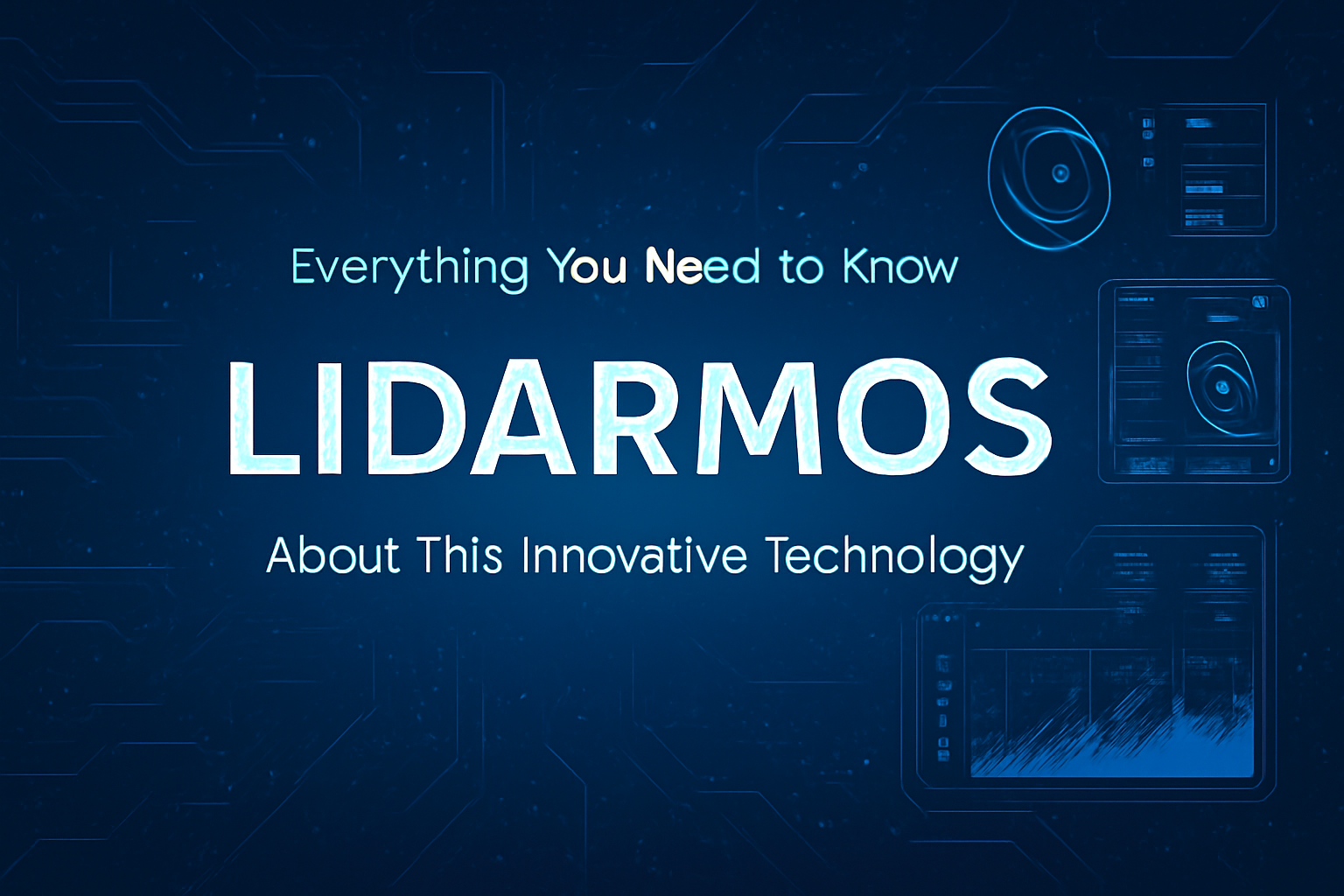The rise of technologies such as Lidarmos is transforming the world as we know it. Their expertise in addressing real-world issues is unparalleled. Furthermore, as countless industries appreciate the utility of lidars, the world of lidars is constantly evolving. Lidar, autonomous vehicles, and even environmental monitoring are a few such examples of possible applications where lidars can be utilised.
The potential lidarmos hold is astounding and unearths numerous possibilities. With being able to do time landscape mapping or optimising logistics to be able to save time and even provide more precision, the lidars make the world a better place. Whether you are a tech enthusiast or simply someone who enjoys keeping up with new inventions, learning about lidars will certainly be eye-opening.
What is Lidarmos?
Lidarmos is an advanced lidar technology, which stands for Light Detection and Ranging. Similar to radar, it uses laser light to measure distances and capture spatial data, and more specifically, creates a 3D telephoto image. With the help of real-time pulses of light, lidars can produce 3D models with high precision.
Lidarmos are also able to help in identifying surfaces, which can allow and improve a great deal of visualisations. By providing real-time shapes and surfaces, lidars can certainly help in enhancing and improving visual depiction, and ultimately, the tech industry as a whole.
Due to its improved resolution over traditional techniques, lidar has been integrated into surveying, agriculture, urban planning, and even forestry. These industries stand to benefit significantly from lidar’s precise data measurement capabilities, transforming their decision-making processes.
The Evolution of Lidar Technology.
In the 1960s and beyond, the application of lidarmos for military purposes and the advancement of laser technology led to smaller, more efficient, and cheaper lidar devices. This improvement made lidar more accessible as devices became easier to obtain. In the late 1990s, terrestrial lidar systems gained popularity among surveyors and urban planners, paving the way for innovation.
The present-day devices and systems are even more advanced. Modern lidarmos devices are not only cost-effective, but their lightweight nature makes them more accessible. Modern software enables data to be processed within shorter periods, and greater data accuracy, alongside improved mapping techniques, changes how we understand the world.
Applications and Uses of Lidarmos
Lidarmos are widely used in many sectors. It is essential for the navigation and obstacle avoidance of autonomous vehicles. In their operation, lidarmos are used to assimilate 3D maps to understand the vehicle’s surroundings.
Lidarmos are used in the agricultural sector in monitoring and managing crops. Farmers can analyse the land and plant healthy crops for effective and efficient farming. This technology increases farming yield and lowers resource consumption.
Furthermore, urban planners make good use of lidarmos data in the planning stages of such a project. There is an optimal use of technology, as city planners are able to devise strategies to ease the design and make infrastructural projects more effective. Visualisation of the changes on the Earth’s terrain helps make informed decisions on construction and environmental planning, impact assessments, and resource allocation.
Benefits and Limitations of Using Lidarmos
The precision and efficiency offered by Lidarmos are unmatched. The possibility to acquire and capture high-resolution data for accuracy in environmental mapping and modelling is a major boost in construction, agriculture, urban planning, and many other sectors.
The other side of the coin cannot go unexamined. Smaller businesses, or users on the other side of the line, face a significant barrier due to the cost of lidarmos technology. In spite of the unmatched accuracy, interpreting the data is infamously known to be a time-consuming process requiring intense levels of skill and training.
Effectiveness can also be determined by environmental factors. The occurrence of heavy fog may obstruct visibility, making it difficult for signals to be accurately detected and thus emitting wrong values. When weighing whether centroids are appropriate for a user’s needs, a balance between benefits and costs needs to be considered.
Possibilities for the New Uses and Development of Lidarmos
With new development, new possibilities have emerged; thus, it can be said that the future of lidarmisos is bright. Accurate and efficient data collection is expected to become increasingly sophisticated due to the continual advancement of technology. As lidar systems become more sophisticated, they can capture increasingly complex environments with astonishing precision.
New lidarmos are also being introduced with greater capabilities due to the advances of AI. It is easier for scientists to interpret and process data because machine learning can quickly analyse data, making AI lidar synergy very powerful by opening various new possibilities.
Along with the AI advances, trends in lidar systems have made access more obtainable through drones and smaller devices. The application of such systems in real-time situations enhances multifunctional uses, for example, in autonomous vehicles in smart cities or in farming, where they can monitor crop health.
Conclusion
Lidarmos represents a notable advancement in lidar technology as it enhances innovation in different industries. Its range of use includes autonomous vehicles, environmental monitoring, and urban and regional planning. With further development, this technology is expected to provide even greater opportunities to improve efficiency and accuracy.
Lidarmos offers real-time analysis, reporting, and data collection; however, there are numerous challenges users must work to overcome. Navigating these limitations can help make its use more effective, enabling greater results despite the challenges.
The prospects appear bright as work is done to improve and expand the functionalities of lidarmos. Its use of artificial intelligence and machine learning technologies may improve further, expanding its benefits in numerous industries.











